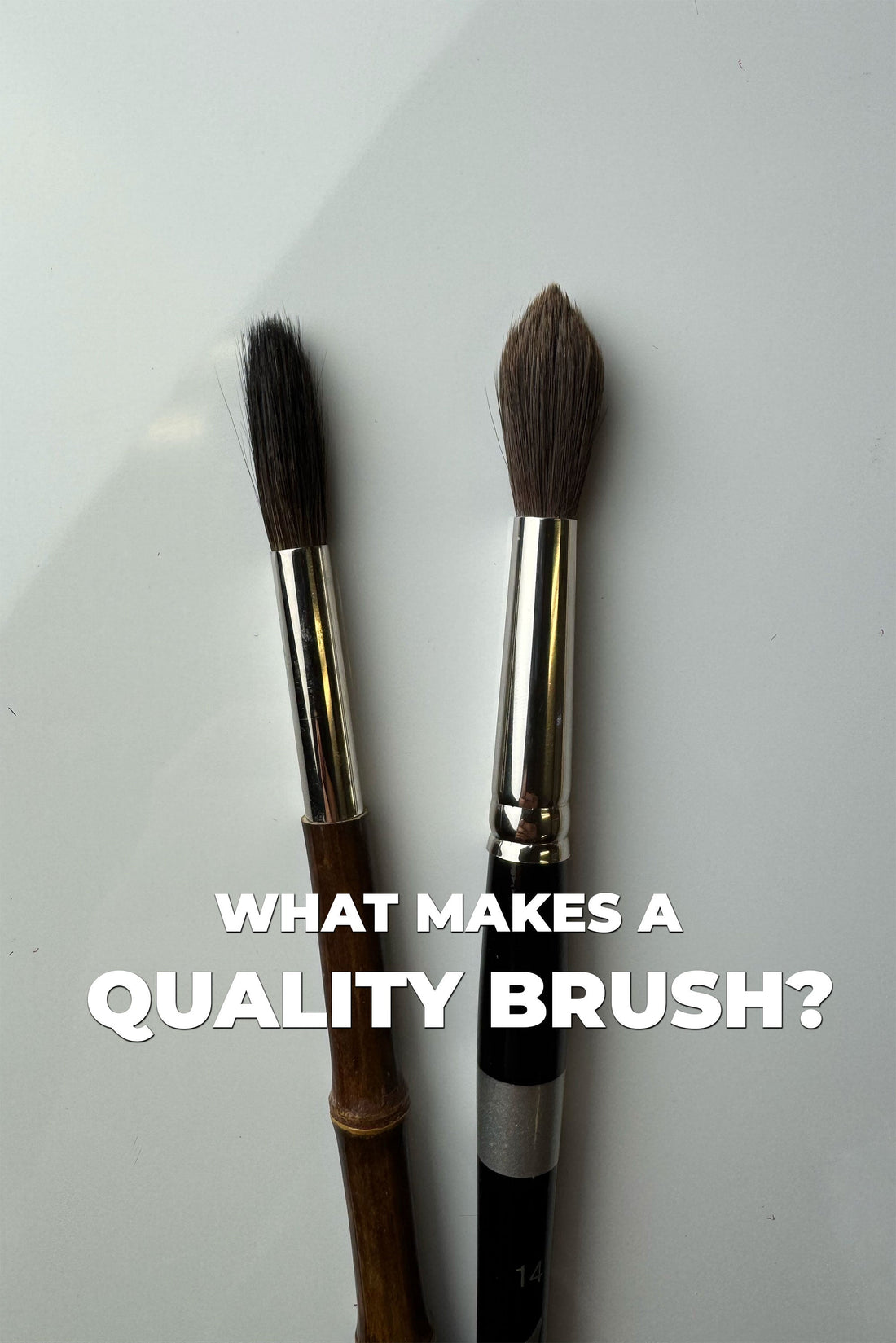If you’ve ever stood in an art supply aisle wondering why one brush costs a few dollars while another is ten times that price, you’re not alone. To the untrained eye, they might look the same — a handle, some bristles, a metal ferrule holding it all together. But to an artist, a brush isn’t just a tool. It’s an extension of the hand, and the difference in quality shows up every time bristles meet the surface.

So what makes one brush more expensive than another? Let’s take a closer look.
The Anatomy of a Brush
A well-made brush is more than just hair on a stick. Every part matters:
-
Handle: Quality brushes often use hardwood that’s been properly dried and sealed, which helps prevent warping when exposed to water or solvents. The lacquer finish isn’t just about looks — it protects the wood and provides balance in the hand.
-
Ferrule: This small metal sleeve is more important than it seems. Seamless nickel or brass ferrules are durable and resist corrosion, while cheaper, crimped versions can loosen and split over time.
-
Hair or Filament: This is where costs can rise significantly. Natural options like kolinsky sable or hog bristle are rare and require careful processing, while high-end synthetics are engineered to mimic those natural properties — snap, spring, absorbency — without the ethical or sourcing challenges.
Each element adds to the overall feel, longevity, and performance of the brush.

Handmade vs. Mass-Produced
Many inexpensive brushes are cut by machine. That means the tips of the hairs are blunt, which can make them feel scratchy and unpredictable on the surface. Higher-quality brushes are shaped by hand so that the natural taper of the hairs is preserved, giving the brush a smoother stroke and more precise control.
That shaping process takes time, skill, and care — and it’s part of why professional-grade brushes carry a higher price tag.

The Cost of Materials
High-grade natural hairs are increasingly rare. Kolinsky sable, for example, has long been considered the gold standard for watercolor because of its water retention and spring. But it’s also one of the most expensive materials in the art world.
On the synthetic side, companies (including Trekell) invest heavily in developing fibers that behave like natural hair. The result is filaments that snap back like kolinsky, hold paint well, and last longer — but that kind of innovation doesn’t come cheap.

Longevity = Value
A cheap brush might save money at checkout, but it often frays, sheds, or loses its shape after just a few sessions. A well-made brush, on the other hand, can last years with proper care. Over time, investing in better brushes actually saves money — and it saves frustration in the studio.

The Trekell Standard
At Trekell, we take brushmaking seriously. Every brush is tested for balance, snap, and durability, whether it’s a classic Golden Taklon or an innovative Protege Plus. We know artists are putting their trust in us when they pick up a Trekell brush, and we don’t take that lightly.
The next time you find yourself weighing the price difference between brushes, remember: you’re not just buying wood and bristles. You’re investing in control, consistency, and longevity — the things that let your creativity shine without distraction.
👉 Ready to feel the difference for yourself? Explore Trekell’s full line of brushes [here].

